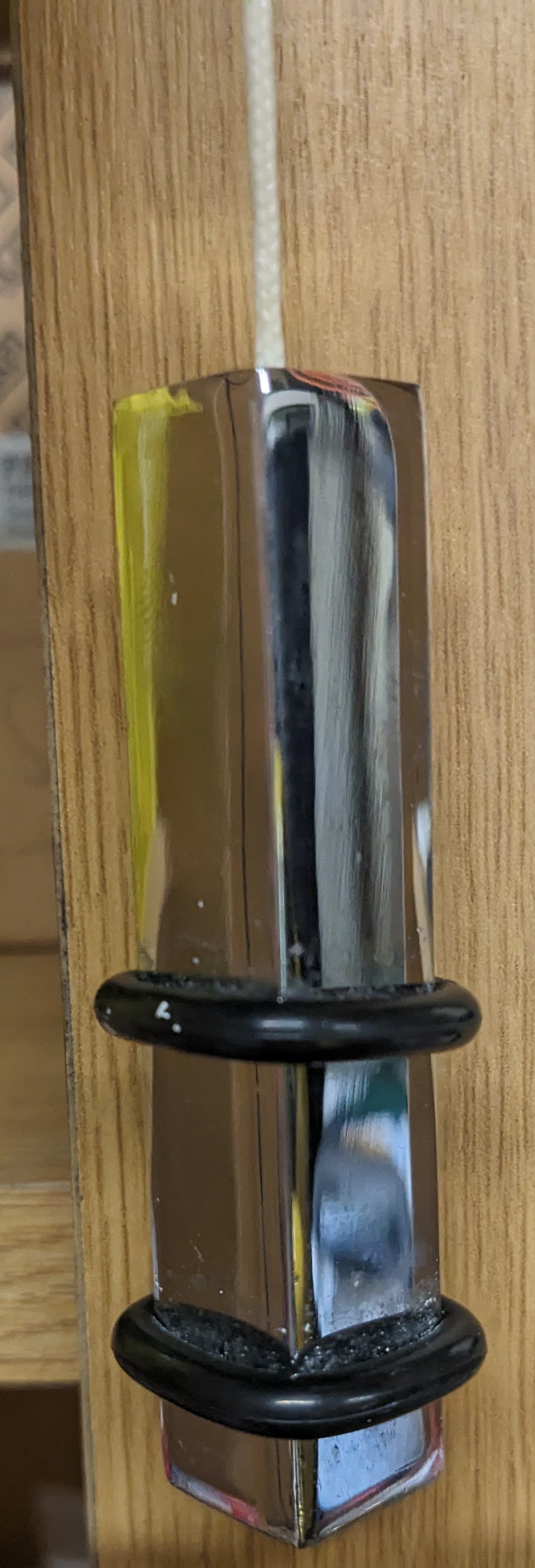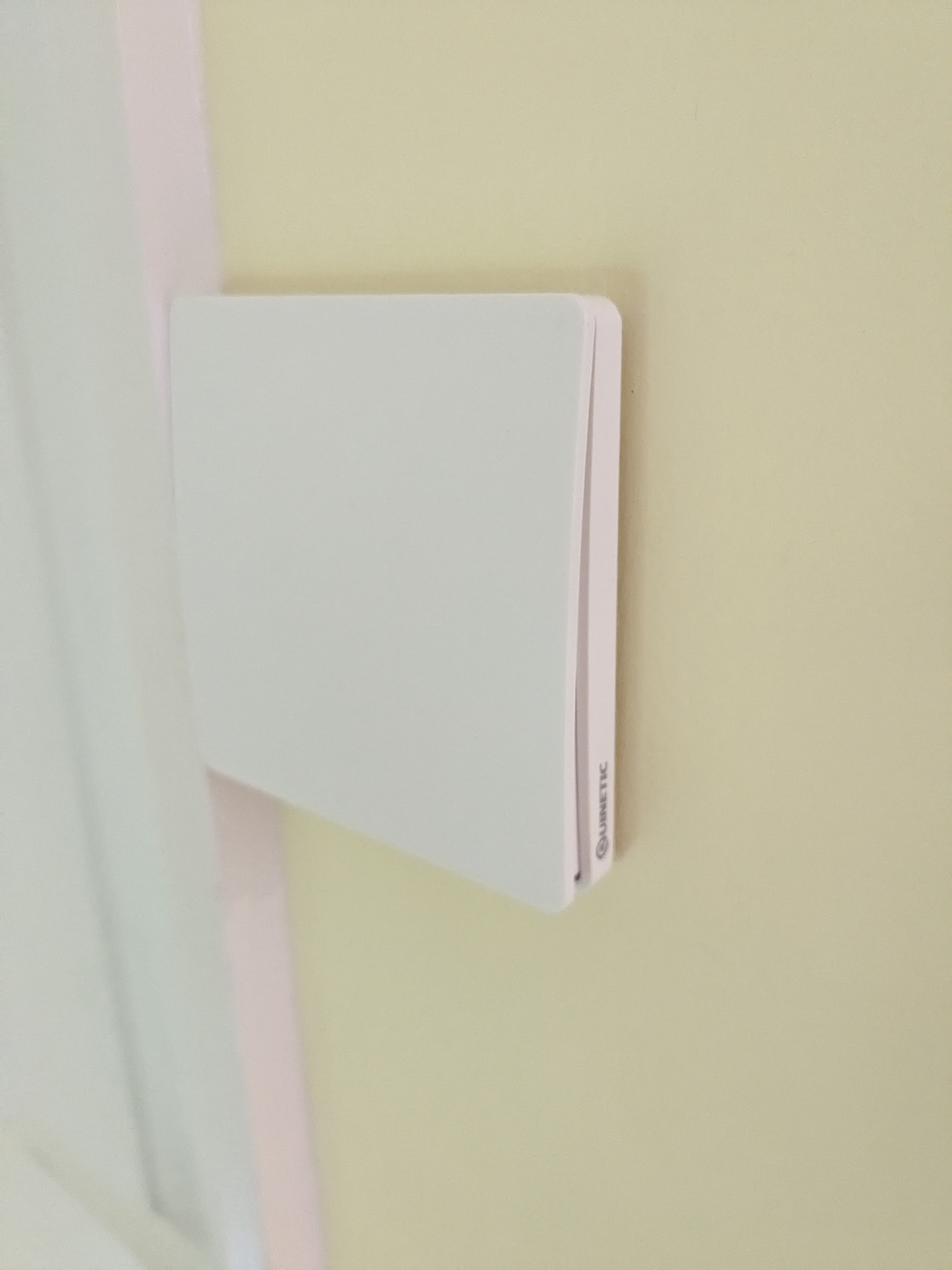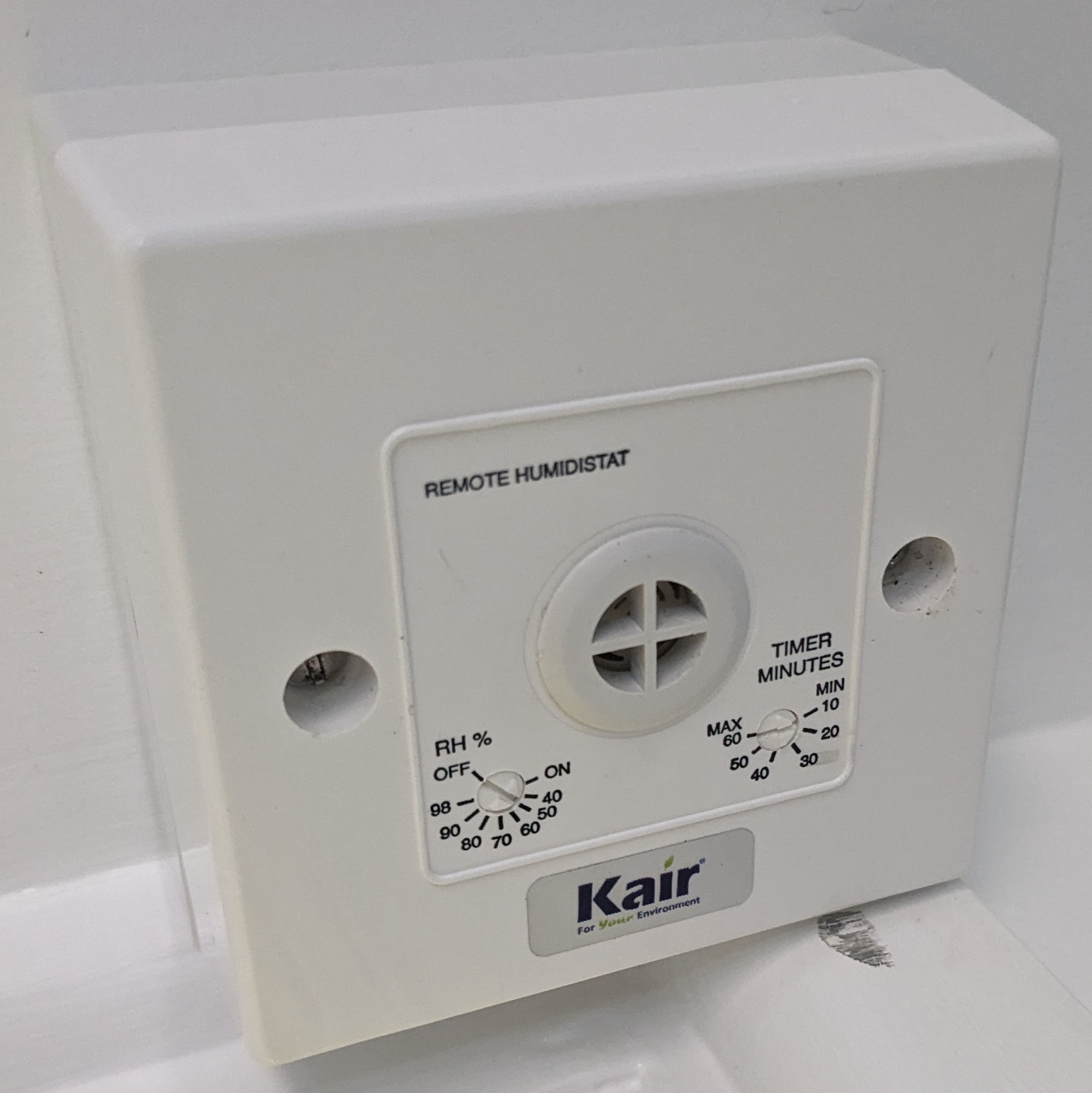Humidistat fans and the war on pull cords
When it comes to turning lights on and off, there’s nothing worse than a pull cord. OK, so that’s a matter of opinion, but besides the piece of string getting increasingly grubby over time and the loud “clack” noise the damn things make when someone nips to the bathroom in the middle of the night, I had (until recently!) one which had been fitted with O-rings on the handle by the previous owners of the house:

Why, I hear you ask? To stop the metal handle cracking the tiled wall it hung next to. Top retroactive engineering.
Anyway, with a bit of imagination and some basic skills, I’m slowly removing the pull cords from my house. The easy one was the one controlling the light inside a cupboard - just replace it with a “press to break” switch mounted on the door frame, and the light comes on when you open the door. Sorted.
The downstairs loo/utility room was fairly easy - I installed a PIR sensor in the ceiling, with a three minute timeout. Works nicely and completely hands off.
More recently it’s been the turn of the main bathroom. Replacing the pull cord with a proper light switch on the wall outside was fairly straightforward. The key thing to know is that battery-free wireless switches exist, such as those sold under the Quinetic brand:

… so there’s no need to start destroying walls to run switch cables. And if the bathroom in question’s lights are right next to the loft hatch, getting up there to swap the two-core to the pull cord for a three-core (live, neutral, switched live) to the Quinetic receiver is very doable. Stick the switch to the wall and it’s goodbye Mr Pull Cord.
While I was up there, I did another improvement I’ve had in mind for a while.
UK building regulations have long insisted on a extractor fan being fitted to any room containing a bath or shower. And that’s fair enough, because you’re guaranteed to get condensation and mould issues if you don’t have one. However, the standard UK set-up is that the fan comes on when you turn the light on, then runs for a fixed number of minutes after the lights go off.
This is not very clever, and again not ideal in terms of noise in the middle of the night. A smarter way of doing it is to drive the fan from a humidistat, i.e. something which turns it on when the air gets damp and runs it until it’s not.
If your fan clings to the ceiling then you can replace the unit itself with one that has a humidistat built in, but if your fan is “inline” i.e. hidden away in the attic part-way along the duct, then you need a separate humidistat. Like this one:

Having ferreted around under insulation, I located a four way junction box with five cables stuffed into it, badly. Fortunately there was enough slack on the cables to run them all over to a fan isolator next to the loft hatch, mounted on a nice deep box with all the junctioning done in Wago connectors in the back.
The humidistat includes an over-run timer as well, but by not connecting the switched live to it, you can disable this function and just have the fan come on when the humidity rises too high.
So far, it all seems to be working as expected. Let’s just hope the fan isn’t worn out by its new longer run times, because it’s buried even further behind insulation and I don’t want to have to find it.